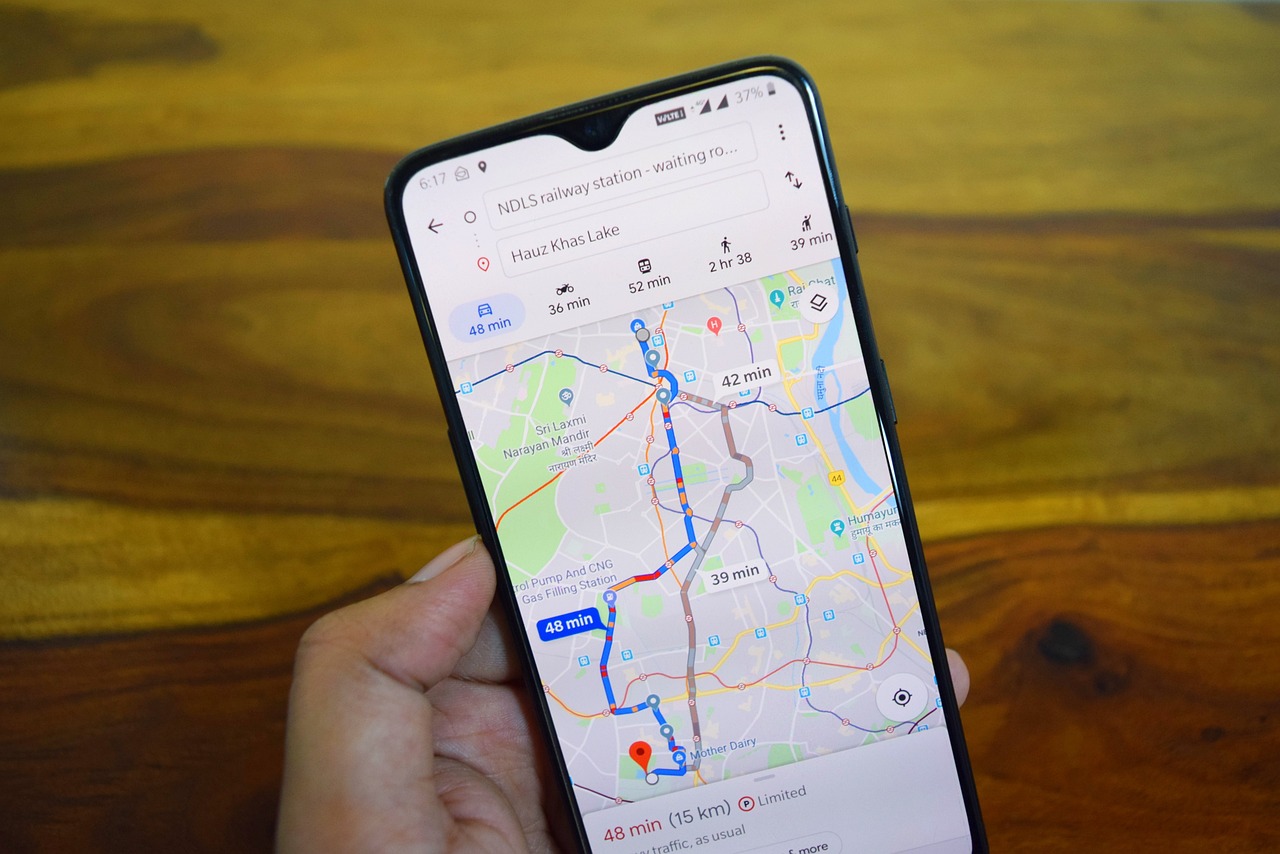Backend Developers have a crucial task: they build the infrastructure that underlies web apps and software. While the backend may be invisible to the user, it allows everything they see to operate — making backend development one of the most vital parts of the software development process.

When you consider the impact and prestige of backend work, it’s perhaps no surprise that it is far and away the most popular specialization for Software Engineers. 36% of all Software Engineers in Silicon Valley are backend, and it is perennially one of the most in demand software roles.
With the competition and evolution of software development, it isn’t always easy for recruiters to find and hire a qualified candidate to fit their team’s needs. That’s why we put together this guide on how to hire Backend Developer talent.
It covers the essential hard and soft skills, a comparison of various backend roles and titles, sample resumes, interview questions and tips, market salary data, and more.
Check out our complete walkthrough on how to successfully hire a Backend Developer below.
What is backend development?
Backend development is the “behind the scenes” in a software application that supports the frontend, or the part of the software application that an end user interacts with. Backend development involves creating the servers, databases, APIs, and other parts of the application that the user doesn’t see, but that are essential for the frontend to function correctly.
Another term for backend development is server-side development (versus client-side, another word for frontend development).
Types of Backend Developers
In a general sense, backend development can encompass data engineering, storage, security, networking, and all the coding that the end user doesn’t interact with directly. However, a Backend Developer may also commonly refer to an application developer focused on the backend of the application.

While roles can overlap or vary from company to company, here is a breakdown of how we characterize the various types and specialties of Backend roles at Celential, as well as the skills and concepts recruiting and hiring teams can look for.
Application
These Back End Software Developers build the backend application layer of the software product, alongside Full Stack Developers and Frontend Developers. Some examples of software products include Slack, Zoom, and Google Docs.
Application Backend Developers typically focus on the application logic, databases, API development, API integration, and microservices.

Platform
Platform teams build the services that support the application layer. By taking care of the underlying complexities of the platform and infrastructure, they enable Application Developers to focus on building features.
Often, they build data pipelines and platforms and have a strong background in distributed systems.

Infrastructure
The infrastructure specialization overlaps with the platform specialization, and many engineers may work on both. However, the infrastructure layer is “below” the platform layer. Infrastructure Engineers typically have a good background in distributed systems or even the system level (operating systems, networking, storage, etc.).
If you have a piece of hardware (such as a computer), infrastructure is the lowest level of software upon which the platform is built, and the software is built on top of that.
Data Infrastructure Engineers typically work with Hadoop, Spark, Kafka, Flink, Storm, and other data tools. Cloud Infrastructure Engineers often work with cloud computing providers such as AWS, Azure, and GCP, and DevOps or cloud computing tools such as Docker, Kubernetes, Jenkins, Salt, Ansible, Puppet, Chef, and Terraform.

Data/ETL (Extract, Transform, and Load)
Data Engineers build the virtual “pipelines” between data systems. Depending on the company and role, a “Data Engineer” may also build the infrastructure necessary to process and access data. In other contexts, Data Engineers may be more narrowly focused on building ETL pipelines, which can be done using ETL tools and without extensive programming expertise.

The scope of responsibilities for a Data Engineer can vary, with some roles straddling both infrastructure and pipeline creation, or even backend application development.
Some common skills for Data Engineers include Python, SQL, and database management.

Machine Learning (ML) Back End Developer
These engineering professionals are focused on building and implementing Artificial Intelligence (AI) and Machine Learning (ML) pipelines and models that “learn”, or leverage data to improve performance over time. ML engineers build not just the models, but the underlying systems and infrastructure for these models.
ML Engineers typically use Python and an ML framework such as NumPy, SciPy, Scikit-learn, TensorFlow, Keras, or Pandas.

ML specializations include Natural Language Processing (NLP), Computer Vision (CV), and Deep Learning.
Embedded Back End Developer
Embedded Engineers work in very low-level systems, meaning that they write code directly for the computer hardware. Some may have a hardware background.
Some common uses of embedded systems are smart thermostats, wearable devices, and car navigation systems (GPS).
Embedded Engineers are typically proficient in low-level languages such as C and C++.
Source: makeameme.org
OS (Operating Systems) Back End Developer
OS Engineers craft the software layer between user applications and hardware, such as Windows, macOS, or Linux. The operating system manages all the computer’s memory, processes, and storage.

OS Engineers typically work mainly in C and C++, and focus on areas such as kernel development, device drivers, and system utilities.
Networking Back End Developer
Networking is the process of connecting computers to share resources. These Engineers typically work on L2-L7 of the OSI model as pictured below.
This role is often found in companies that provide cloud-based services, networking tools, or distributed systems such as Cisco or Palo Alto Networks.

Storage
These Backend Engineers build storage architectures, potentially including databases, large-scale data processing systems, block storage, object storage, or file systems. In addition to a strong background in storage systems, they often have exposure to OS or Networking as well.

Storage Backend Engineers typically work in backend programming languages such as C, C++, Go or Python.
They can often be found working for companies that offer storage solutions, such as NetApp or Pure Storage.
Web3/Blockchain app development
These Backend Developers build web applications and systems on distributed networks such as blockchain. They focus on the server side of Dapps (decentralized web applications).

Backend Web3 Developers may be skilled in Blockchain technologies, Smart Contract Development, Decentralized Architecture, and Cryptography.
Tips for hiring Web3 Backend Developers
Many blockchain startups find that traditional methods of finding candidates through career and job sites and paid ads don’t work — particularly when it comes to hiring experienced Web3 or Blockchain Developers. You can check out our full guide to hiring Web3 developers for updated strategies for making a successful hire.

Backend application development skills
If you’re looking to hire a Backend Developer to work on your software product, here are the most important skills to look out for.

Coding
Backend Developers know backend programming languages such as Java, Python, Go, C, C++, or Ruby. They also know backend libraries and frameworks with prewritten code and structures for common tasks in a coding language.
Some common tech stacks for Backend Developers include Java/Spring, Python/Django/Flask, Ruby/Rails, C#.Net, and JavaScript/NodeJS or JavaScript/ExpressJS.

Database management
Back End Developers are knowledgeable in database (data storage and organization) technologies. These can be both SQL-based (such as MySQL, PostgreSQL, Oracle or SQL Server) and NoSQL-based (such as MongoDB, Cassandra, or Couchbase).
Bonus Tip:
NoSQL stands for “not only SQL”. It emerged to address scalability problems involved in the massive volume, variety, and speed of big data and real-time web applications.

API programming
An API (Application Programming Interface) connects one piece of software to another. For example, developers can use the Google Maps API to embed Google Maps into their own software (rather than building their own map software from scratch).

Backend Developers build APIs to let software applications, databases, operating systems, libraries, and other software components communicate and integrate with each other.
Server scripting
A server is a computer that manages data and services for other computers, called clients, over a network.

Backend developers need to know how to configure servers in order to process user requests, manage database transactions, and generally ensure that a web application functions correctly on the server side.
Version control
Version control tools, most popularly Git, create forking branches through versions of a project. They preserve older versions of code in case they’re useful later. It also allows team leaders to see the whole picture and cross-reference various contributions, only merging pieces of code to the main code base once they are sure that the merge won’t break anything.

DevOps
DevOps integrates software “development” (building a product) and IT “operations” (delivering and supporting the infrastructure upon which the product is built).

DevOps skills and tools that are particularly useful for Backend Developers include Cloud Platforms (AWS, Azure, GCP), Containerization (Docker, Kubernetes), Continuous Integration (Jenkins), Automation and Configuration Management (Ansible, Chef, Puppet, Salt) and Infrastructure as Code (Terraform, CloudFormation).
Sample Resume
Here are some realistic experiences and skills you might see on a typical Backend Developer’s resume.

Back End Developer Resume #1
| Amir Williams Tech Lead at Streak Amir Williams is an experienced Tech Lead with superpowers in both team leadership and backend engineering. Currently leading the development of complex backend service architecture at Streak. |
| Professional Experience: Tech Lead at Streak (2018-) – Guidance and mentoring for Payments team – Reduced paging volume and tech debt by consolidating multiple identity verification services into one – Contributed to solving scaling issues by helping build out a new payments search service — breaking the legacy monolithic service into scalable, available and well-monitored microservices Senior Software Engineer at MoneyPal (2014-2018) – Designed, implemented, and grew an intelligent shopping experience backend serving over 100 million requests per day – Co-designed MoneyPal’s first real time Kafka streaming application – Worked on core platform and RESTful APIs Software Engineer at Finade (2010-2014) – Contributed to the backend system design to ensure high stability, performance, and reliability |
| Education: University of California, Los Angeles – BS in Computer Science (2006-2010) |
| Skills: Ruby on Rails, Git, MyQSL, PHP, C++, CSS, Java, JavaScript, Node.js, Python, Django, PostgreSQL, Apache Kafka, MongoDB, Linux, Pandas, APIs, microservices |

Back End Developer Resume #2
| Daisy Kim Software Engineer at Yip Backend engineer, currently dabbling in full stack |
| Professional Experience: Software Engineer at Yip (2018-) – Building new features on Yip’s service-oriented architecture – Shipped and integrated on production-grade software components using CI/CD, modern DevOps principles and distributed systems – Collaborating with product and other cross-functional software engineering teams to create ecommerce software solutions that delight users Intern at Medora (2017) – Utilized Google Cloud Platform, Airflow, and Hive SQL to produce data driven insights – Developed a geography based playlist curation tool – Backend scaling, creator tools, and user analytics |
| Education: University of California, Davis – MS in Computer Science (2016-2018) New York University – BS in Mathematics |
| Skills: Python, React, C++, APIs, Express.js, Node.js, Django, Flask, Java, Unix, LaTeX, GCP, AWS, MatLab, GitHub, Airflow, Hive SQL, JavaScript, HTML, CSS, DevOps |
How to optimize your Backend Developer skills assessment
Here are a few tips for crafting an effective assessment of backend development skills.

#1: Timing matters.
Particularly for in-demand passive candidates, we advise starting with a phone call to make a personal connection, sell the opportunity and find out what the candidate wants ASAP — whether it’s a promotion, the opportunity to work on new skills, or something else. Once the candidate is excited and engaged, they are less likely to drop out of your hiring process.
#2: Streamline the process.
Top Back End Developers are often pressed for time and unwilling to commit to long or burdensome interview processes. A short but focused assessment (2-3 hours maximum) should be sufficient to gauge technical skill. It will also signal to Back End Developer candidates that you respect their time.

#3: Focus on concepts.
By creating an open-ended, language-assessment challenge, you’ll maximize the utility of the evaluation. Assessments with a specific “trick” or single answer can introduce more chance into the process, making for a less meaningful comparison of candidates.
#4: Set candidates up for success.
Don’t make life difficult for candidates! Communicate clear expectations for what the candidates are required to do, the skills they must demonstrate, how they will be evaluated, and how long it will take. And before showing assessments to candidates, try out your assessment on your current team first to ensure that it’s a reasonable test of the skills a Backend Developer will actually use on the job.

#5: Provide (and solicit) feedback.
For a great candidate experience, it’s important to provide thoughtful feedback to Back End Developers who spent time completing a coding test. And by asking for feedback in return, you’ll give candidates a good impression of your engineering hiring culture (and improve your process too).
Interview questions for Back End Developers
Here are some open-ended questions you can use to identify dedicated Back End Developers.

#1. Walk me through a project you’re most proud of from ideation to implementation.
Interviewers have found that hypothetical questions or brainteasers are less effective at evaluating candidates than real-world practical examples. This question can help you dig into the way a candidate thinks and give concrete insight into how they have actually operated in the past.
You can also dig deeper with follow up questions about the problems Backend Developers were solving, their approach, and the tools they used.

#2: What are some of the biggest challenges facing backend development today?
While the answer to this question will vary, you should listen for answers that demonstrate broad expertise in the software development industry, knowledge of recent issues and trends, and big-picture critical thinking when it comes to business problems.
A few topics candidates may reference include:
- Integrating AI/ML technologies into software development
- Adoption of new computing models such as Backend as a service (BaaS) and serverless computing models
- Blockchain, web3, and new AR/VR approaches to mobile and web apps
- Trending technologies and skills such as Elixir, Django, Go…

#3. Tell me about a time you had to communicate a technical process or strategy to a non-technical stakeholder.
It’s not just about the hard skills in the job description — interpersonal and communication skills are also vital for Backend Engineers. Ideally, a candidate will be able to use well-chosen metaphors, verbal images, and examples to convey technical information in an accurate and accessible way. That’s particularly true when communicating with colleagues from a variety of backgrounds.
#4. Tell me about a time you faced a setback in a project. What did you learn? Was there anything you could have done better, or did you pick up a new language, technology or skill?
Strong answers might reference how an engineer diagnosed and rectified a system bottleneck or critical bug, addressed project scope creep or navigated shifting priorities, or proactively learned a new tool or framework. The ability to self-reflect and desire to continuously improve can also signal a great culture fit for your team.

#5: What are you currently excited about?
Beyond general insight into Back End Developers’ motivations and level of expertise, listening carefully to the answer can help you to effectively pitch the role, opportunity, company and team to candidates.
Full-time vs Freelance Developers
Once you’ve decided upon the ideal skill profile of the Backend Developer you’d like to hire, the next question is whether to hire a full-time Backend Developer, contract or freelance Backend Developer, or outsourced Backend Developer.
Full time Backend Developers
To lay our cards on the table, we believe that hiring a full-time, in-house, experienced Backend Developer is generally the best approach — particularly for startups.

Full-time developers tend to be stronger, as they see long-term software development projects from end to end. They are also the best integrated into your development team and familiar with your culture and needs. However, they do require more upfront commitment and investment in the form of recruiting, onboarding, and benefits.
If you don’t have sustained development needs, there are a few other options to consider.
Contract and freelance Backend Developers
You might want to hire Backend Developers on a freelancer and contract basis for the advantages of speed and flexibility — particularly in uncertain economic conditions.

However, it’s important to consider that contract and freelance Backend Developers are generally viewed as weaker on average. Due to being engaged on a short-term or limited basis, they often receive less mentorship from more experienced engineers and less company investment in terms of training and development.
Outsourced Backend Developers
Third-party software and web development teams are another option to hire Back End Developers. Cost savings are the main advantage — though these services have become more expensive as the industry becomes increasingly globalized, it is still less expensive to hire a Back end Developer in a country such as India, Russia, or Pakistan, where the cost of living and wages are lower.

Disadvantages of offshoring in your development process include language barriers, time differences, and inconsistent development quality. Companies should thoroughly research and evaluate offshore development firms to ensure the quality of work meets acceptable standards.
FAQ: Back End Developers vs. Full Stack Developers vs. Front End Developers vs Web Developers
Wondering about the difference between these common roles?
A Front End Developer creates the visual, client-side elements of software. They use coding languages such as HTML, CSS, and JavaScript to create everything users see and interact with on a website or software application.

A Full Stack Developer codes “across the stack”: meaning, the user front end, API code in the middle, and server back end for web applications and software. Thus, they know both frontend and backend technologies. However, a Full Stack Developer typically leans either towards back end development or front end web development.

Web Developers are typically focused on a company’s website (as opposed to their product). They typically have knowledge of HTML, CSS and JavaScript. They may also work with Content Management Systems (CMS) such as Drupal and WordPress, which automate parts of the coding process.

Backend Developer compensation ranges
Here are some updated market salary data from Glassdoor to inform your compensation range when you hire dedicated Backend Developers.

| Years of experience | Title | Average annual compensation (Base) | Average annual compensation (Additional) |
| 1-3 years | Backend Engineer | $113,068 | $24,878 |
| 4-6 years | Senior Backend Engineer | $136,169 | $49,324 |
| 7-9 years | Principal Backend Engineer | $135,228 | $51,745 |
| 7-9 years | Backend Engineering Manager | $170,616 | $74,496 |

Celential.ai
If your recruiting team is looking to increase your ROI with the latest tech, the most significant area of impact AI can have is on your sourcing process. A recruiter can spend up to 30 hours — over half their workweek — on sourcing potential candidates.
Using AI and ML models custom-built for tech recruiting, Celential provides skilled tech candidates for your roles — freeing you up to close more hires with fewer resources.

We offer:
- Warm, qualified talent ready for interviews appearing in your inbox or ATS
- Coverage of specialized engineering, product, and sales talent: including ML Engineer, Data Scientist, Full stack Developer, Back End Developer, Front End Developer, DevOps Engineers, Tech Leads, Architects, Managers
- Instant flexibility to scale up and down your recruitment efforts as your hiring needs, role priorities, and budget shift during these uncertain economic times.
Start receiving highly qualified tech candidates today!

Table of Contents

































Submit a Comment